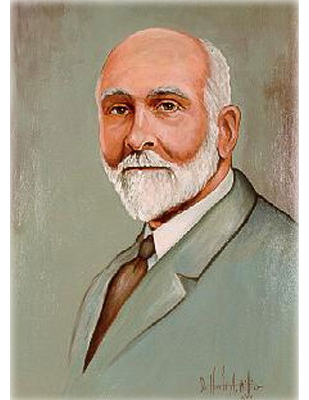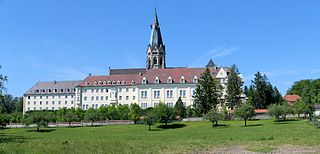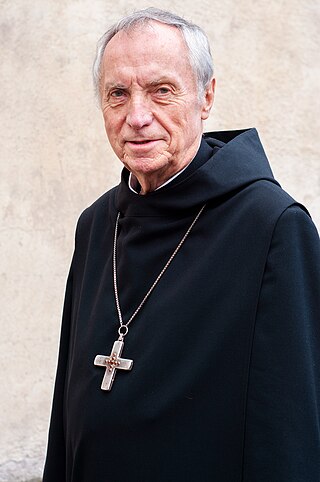Related Research Articles

The Russo-Japanese War was fought between the Empire of Japan and the Russian Empire during 1904 and 1905 over rival imperial ambitions in Manchuria and the Korean Empire. The major theatres of military operations were in Liaodong Peninsula and Mukden in Southern Manchuria, and the Yellow Sea and the Sea of Japan.

Manchuria is a region in East Asia. Depending on the definition of its extent, Manchuria can refer either to a region falling entirely within present-day China, or to a larger region today divided between Northeast China and the Russian Far East. To differentiate between the two parts following the latter definition, the Russian part is also known as Russian Manchuria, while the Chinese part is known as Manchuria.

The Soviet invasion of Manchuria, formally known as the Manchurian strategic offensive operation or simply the Manchurian operation, began on 9 August 1945 with the Soviet invasion of the Japanese puppet state of Manchukuo. It was the largest campaign of the 1945 Soviet–Japanese War, which resumed hostilities between the Union of Soviet Socialist Republics and the Empire of Japan after almost six years of peace. Since 1983, the operation has sometimes been called Operation August Storm after U.S. Army historian David Glantz used this title for a paper on the subject.

The Korean independence movement was a series of diplomatic and militant efforts to liberate Korea from Japanese rule. The movement began around the late 19th or early 20th century, and ended with the surrender of Japan in 1945. As independence activism on the peninsula was largely suppressed by Japan, many significant efforts were conducted abroad by the Korean diaspora, as well as by a number of sympathetic non-Koreans.

Pak Hon-yong was a Korean independence activist, politician, philosopher, communist activist and one of the main leaders of the Korean communist movement during Japan's colonial rule (1910–1945). His nickname was Ijong (이정) and Ichun (이춘), his courtesy name being Togyong (덕영).

Jonathan Goforth was a Canadian Presbyterian missionary to China with the Canadian Presbyterian Mission, along with his wife, Rosalind (Bell-Smith) Goforth. Jonathan Goforth became the foremost missionary revivalist in early 20th-century China and helped to establish revivalism as a major element in Protestant China missions.

St. Ottilien Archabbey is a Benedictine monastery in Emming near Eresing and the Ammersee in the district of Landsberg, Oberbayern, Germany. It is the motherhouse of the St. Ottilien Congregation.

The Ottilien Congregation, often also known as the St. Ottilien Congregation and as the Missionary Benedictines, is a congregation of religious houses within the Benedictine Confederation, the aim of which is to combine the Benedictine way of life with activity in the mission field.

Notker Wolf is a German Benedictine monk, priest, abbot, musician, and author. He is a member of St. Ottilien Archabbey located in Bavaria, Germany, which is part of the Benedictine Congregation of Saint Ottilien. He previously was elected and served as the ninth Abbot Primate of the Benedictine Confederation of the Order of Saint Benedict. He was elected to his position as Abbot Primate in 2000 and ended his final term in 2016.

Kim Il Sung was a Korean politician and the founder of North Korea. He ruled the country from the country's establishment in 1948 until his death in 1994. Afterwards, he was declared its eternal president. His birth name was Kim Song Ju (김성주).

Maximilian August Scipio von Brandt was a German diplomat, East Asia expert and publicist.

Thomas Spreiter, OSB was a German missionary, one of the first of the Missionary Benedictines, who worked in German East Africa and later South Africa. He was the ordinary of the Roman Catholic Archdiocese of Dar-es-Salaam in German East Africa, and bishop of the Apostolic Vicariate of Natal and of the Vicariate of Eshowe.

Tokwon Abbey was a Benedictine monastery of the Congregation of Missionary Benedictines of Saint Ottilien, located near the town of Wonsan in what is now North Korea. Founded as a monastic mission in Seoul, the community transferred to Tokwon in the 1920s to take charge of the newly created Apostolic Vicariate of Wonsan. The persecution of Christians in North Korea since 1949 made any church activity in the abbacy impossible. However the Territorial Abbacy of Tokwon is formally still kept as one of the few remaining territorial abbeys within the Catholic Church.
The Abbey of Our Lady Help of Christians, Ndanda, Tanzania, is a Benedictine monastery of the Congregation of the Missionary Benedictines of Saint Ottilien. Established in 1906 as a mission station in German East Africa, the monastery is currently home to 71 monks. On 25 March 2021 the community elected Fr. Christian Temu OSB its 6th Abbot.
St Paul's Abbey, Newton, New Jersey, is a Benedictine simple priory of the Congregation of Missionary Benedictines of Saint Ottilien. Originally established as a mission procure following World War I, over time the size of the community drastically decreased. In 2002, monks from Waegwan Abbey, South Korea, took charge of the monastery. On January 25, 2004, Newton II was elevated to the status of a simple priory. The community's superior is Fr Prior Samuel Kim.
St Benedict's Conventual Priory, Digos, Davao del Sur, Philippines, is a Benedictine monastery of the Congregation of Missionary Benedictines of Saint Ottilien. Established in 1983 at the request of Bishop Generoso Camiña of the Diocese of Digos, the monastery is currently home to 21 monks. Conventual Priory Fr Edgar Friedmann is the community's superior.

Saint Maurus and Saint Placidus Abbey, Waegwan, Chilgok, North Gyeongsang, South Korea is a Benedictine monastery of the Congregation of Missionary Benedictines of Saint Ottilien. Established in 1952 by Korean monks who had survived the dissolution of the Territorial Abbey of Tokwon and Holy Cross Abbey in Yanji, the monastery is currently home to 131 monks. Fr Blasio Park is the current abbot.
Holy Cross Abbey, Yenki (Yanji), Jilin, China, was a Benedictine monastery of the Congregation of Missionary Benedictines of Saint Ottilien. Established in 1922 as a mission station, the monastery later became the seat of the Vicariate Apostolic of Yenki. After the withdrawal of Soviet forces following World War II, the monastery was suppressed by the People's Republic of China. While many of the monks were repatriated to Europe, others moved to South Korea and founded the Abbey of Waegwan.

The Korean People's Association in Manchuria was an autonomous anarchist zone in Manchuria near the Korean borderlands, populated by two million Korean migrants. The society operated within the framework of a gift economy based upon mutual aid.
Choe Hyon, also known as Sai Ken, was a North Korean general and politician.
References
- ↑ Witgar Dondorfer (ed.) Schicksal in Korea — Deutsche Missionare berichten. St. Ottilien 1974 ( ISBN 978-3830674030)
- ↑ Johannes Mahr Aufgehobene Haeuser. Die Missionsbenediktiner in Ostasien. St. Ottilien 2009, vol. 2 ( ISBN 978-3830673934)
- ↑ R.G. Tiedemann Reference Guide to Christian Missionary Societies in China from the 16th to 20th century. New York 2009 ( ISBN 978-0765618085)
- ↑ Jean-Pierre Charbonnier Christians in China: A.D. 600 to 2000. San Francisco 2007 ( ISBN 978-0898709162)
- ↑ Johannes Mahr Aufgehobene Haeuser. Die Missionsbenediktiner in Ostasien. St. Ottilien 2009, vol. 2 pp. 646-663
- ↑ Kim, Sebastian C.H.; Kim, Kirsteen (2014). A History of Korean Christianity. Cambridge: Cambridge University Press. ISBN 978-0521196383.